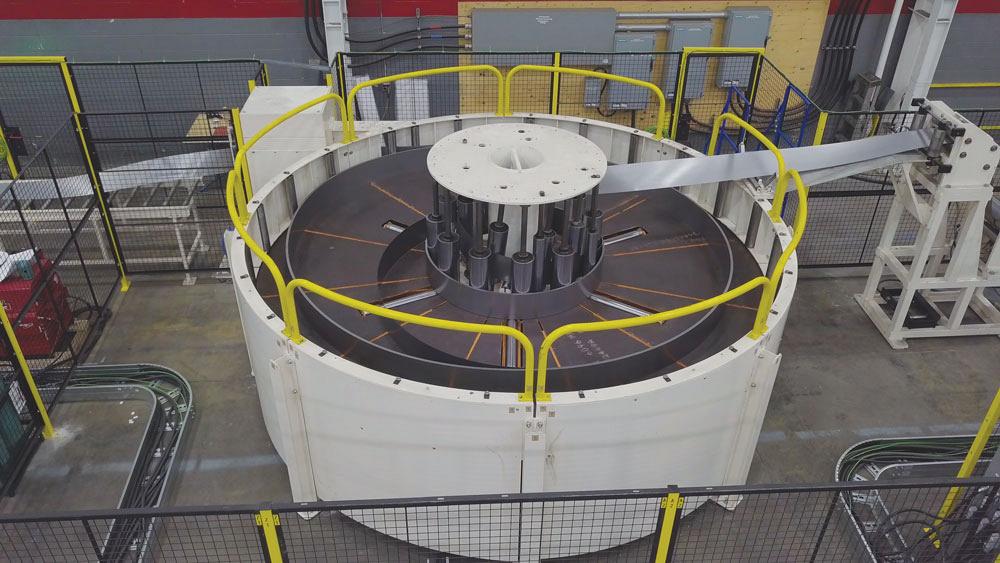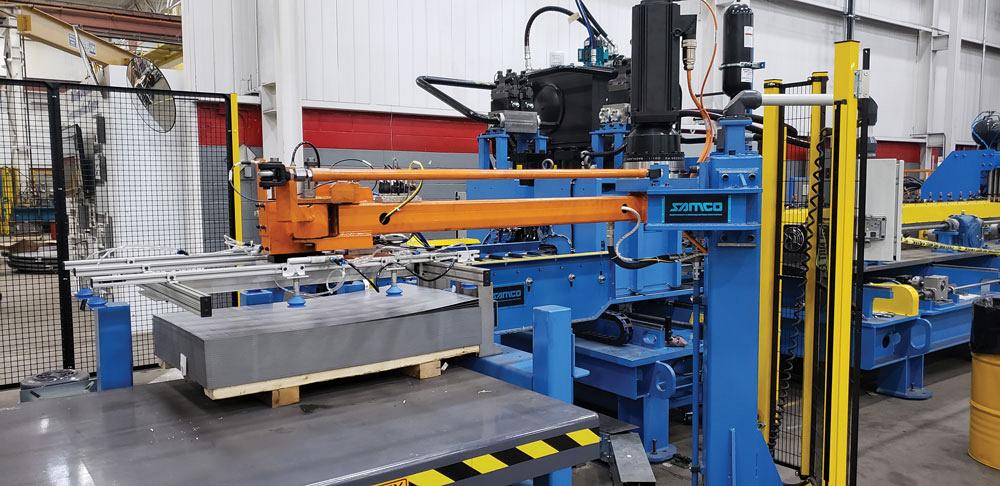Roll forming systems used to run at a very slow speed, about 50 ft./min., Which made it easy to handle everything manually at the end of the line. These days roll formers can run anywhere from 300 to 500 ft./min. Speed can make parts hard to handle, but so can part configuration, which has become more complex as machine capabilities have expanded.
Typically, parts were roll-formed and then additional features and processes were incorporated manually down the line. Today’s roll forming systems can include some punching, forming, bending, and other processes that have nothing to do with roll forming itself and are designed for complete, done-in-one part manufacturing. And with these systems comes sophisticated material handling automation.
Moving from one process to another, automated material handling eliminates human error, particularly as it relates to part orientation. Automation helps verify that the correct part is being handled and orients it for proper processing.
It also helps to reduce the dependency on an operator, which increases roll forming uptime and speed. A material handling system can process parts much faster than any operator can, especially when the parts on the line are large and heavy. Manually moving and orienting these parts repeatedly throughout the day opens operators up to fatigue and injuries.
Time savings is another benefit of an automated material handling system, especially with packaging and nesting. An operator can sometimes lose count of part runs, and shipments can go out with inaccurate orders. The ability to count part runs to ensure orders are completed correctly saves time, both on the front end with inventory and in ensuring orders will not need to be reproduced and reshipped.
COVID-19 also has demonstrated additional benefits of automated material handling systems. Fabricators are required to follow strict protocols for limiting the number of people in a workspace and maintaining proper distancing. These systems reduce the number of workers needed to run the roll forming equipment, maintaining safety standards.
What You Need to Know
Most shops have limited space on the shop floor, and incorporating automated material handling equipment can take up more space than what is currently allotted, so a restructuring of equipment might be needed. This takes careful planning, especially if there are secondary processes involved.
Some shops might not see the initial value in adding such a system, especially with the upfront costs. But the machine does not take breaks and will continue at the same processing rate throughout the day. By removing the human element and maintaining consistency of the process, fabricators can expect significant throughput gains, sometimes upwards of 35 percent.
Although there is a general interest in automated material handling systems, not all fabricators require such systems. It’s important to investigate whether a shop can benefit from new equipment, especially because of the significant upfront costs in many instances, and what the best options are for existing and future manufacturing activities. Is there enough volume for automated material handling? And if so, where are bottlenecks in the process and where can automation best be used?
Front-end Systems
Automation can be a benefit in several aspects of roll forming, depending on customer requirements and machine specifications.
A coil coming off an uncoiler goes into an accumulator, where it is fed into the roll former, allowing the coil to be changed without stopping.
Coil Handling. The choice of coil handling system depends on how often coils need to be changed and the speed required.
A single or double-ended uncoiler can be used to changeover coils as material is used. The single option tends to be slower but does not take up as much space on the shop floor. On a double-ended uncoiler, with one side running, the second side coil can be loaded to minimize downtime.
A coil car and upender combo allows for a coil to be loaded on the coil car while the uncoiler still is running Usually coils are delivered eye-to-the-sky, so the operator must lift the coil to a vertical position using a crane. This process can be extremely risky, as the coil could slip. But the upender will safely bring the coil to the upright, vertical position. The upender/coil car combo also can safely unload partially used coils by bringing them back to the eye-to-the-sky position from a vertical position to be taken away.
Accumulator. A coil coming off an uncoiler goes into an accumulator, where it is fed into the roll former. When the entire coil is in the accumulator, the coil can be changed without stopping the roll forming process. Once the coil is replaced, the material runs into the accumulator again. This automation can save 10 to 15 minutes per coil change.
End Shear Welder. This allows the operator to join the trailing edge of a running coil to the leading edge of a new coil, which saves time on feeding the coil through the whole line. It can save on downtime and limit damage due to manual feeding, reducing scrap.
Pick-and-place System. Rather than manually feeding one blank at a time, this system picks and places precut materials on a powered conveyor. It can select right- and left-handed parts appropriately and orient parts properly for post-processes like bending or punching.
Back-end Systems
How do fabricators deal with the part once the roll forming process is completed? Various automated material handling options are available to integrate at the end of the roll forming line to improve efficiency.
Nester. A nester is used as finished product comes off the line at high line speeds, upwards of 500 ft./min. It collects and nests a group or bundle of finish products, usually for the stud and track industry, to be moved to packing and shipping. Nesters eliminate the need for multiple workers at the end of the roll forming line.
Stacker. This material handling system stacks finished parts at the end of the roll forming line. It is programmed to move the stack at a predetermined number of parts per stack to an area for pickup by a forklift.
Bundler. After parts come off the roll former they are nested into mini-bundles. Bundlers automate the handling of mini-bundles and automatically build pre-programmed master bundles that are ready to be shipped based on part orders and batches. A master bundle lift table rises to receive the first layer of product from the machine and lowers as the stacks build up. They are then strapped together into one unit for shipment. Once that master bundle is complete, the lift table drops all the way down and feeds the completed bundle to the final exit-end roller conveyor.
Rather than manually feeding one blank at a time, a pick-and-place system grabs precut material and puts it on a powered conveyor, orienting it correctly.
This material handling system eliminates manual lifting of packed bundles and reduce injuries due to lifting and turning of heavy, grouped parts.
Packaging. Once the parts come off the roll former and are bundled or stacked, proper packaging is needed to ensure parts arrive safely with no damage. Packaging systems can include shrink wrapping, adding a plastic or paper sheet between each part, adding dunnage and strapping, or bubble wrapping the bundle so that it’s ready to be loaded onto the truck.
Next Wave of Innovation
With many different automated material handling systems in place, it’s important to have a monitoring system. Today’s machines are so fast that operators cannot keep up with how fast the parts are processed, which makes it even harder to keep up with ensuring parts are produced properly.
Adding quality checks or monitoring into the processes is something that we will see more and more of in our roll-forming systems. The ability of the automated material handling system to recognize all parts, identify bad parts, and separate them out before bundling and shipping will be a huge cost and time saver.
The latest and greatest automated material handling systems can make any fabricators’ life easier. Fewer employees are needed for manual handling of parts through the roll forming process, eliminating safety concerns and freeing up workers for other processes. Adding even one or two of these options can make the roll forming process faster and more reliable. Not every shop needs top-of-the-line equipment, but it’s important to look at existing and future needs so that the equipment can keep up with shop growth. Customizing the roll forming line should be based on the roll former and its capabilities, part production needs, and an understanding of the upfront costs and return on investment.


